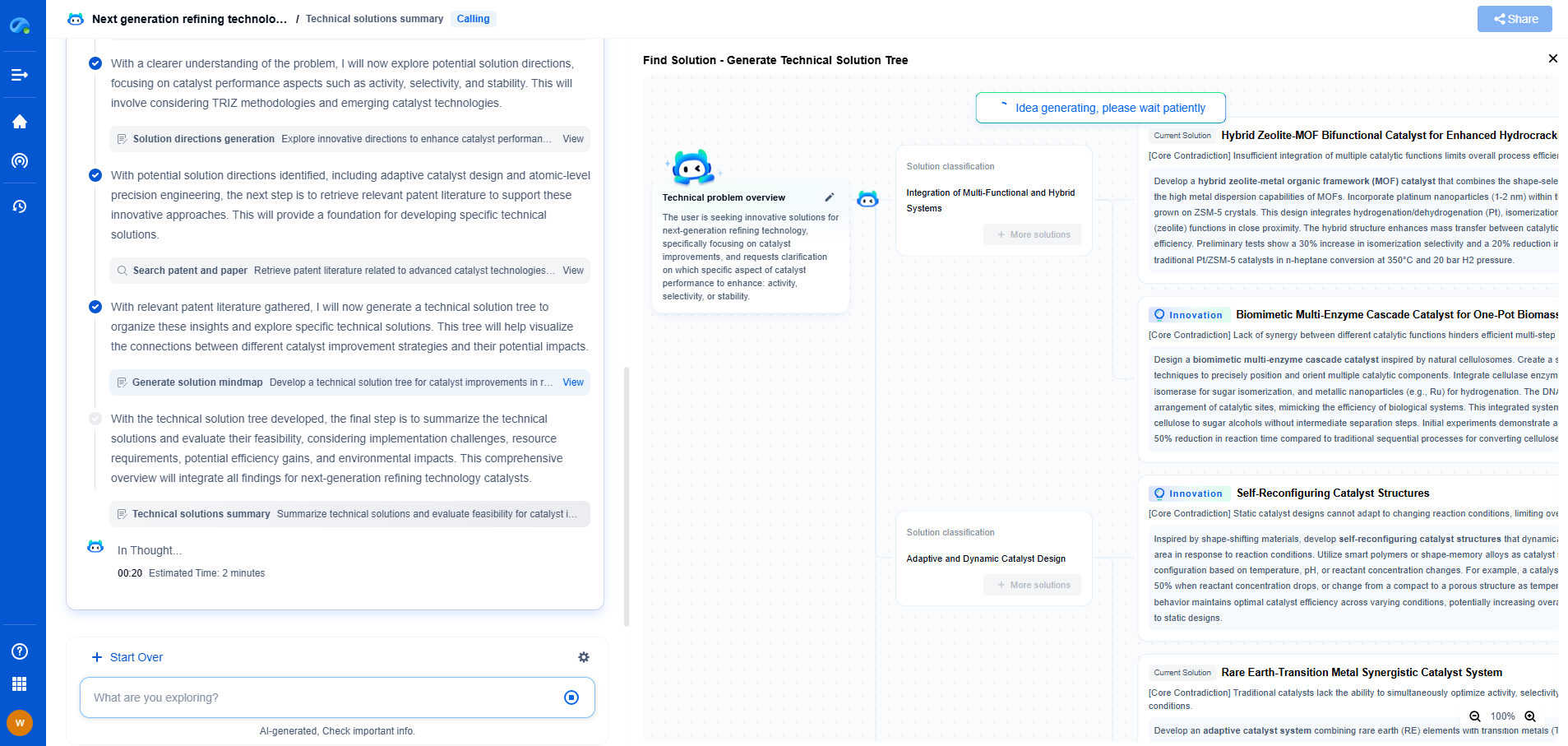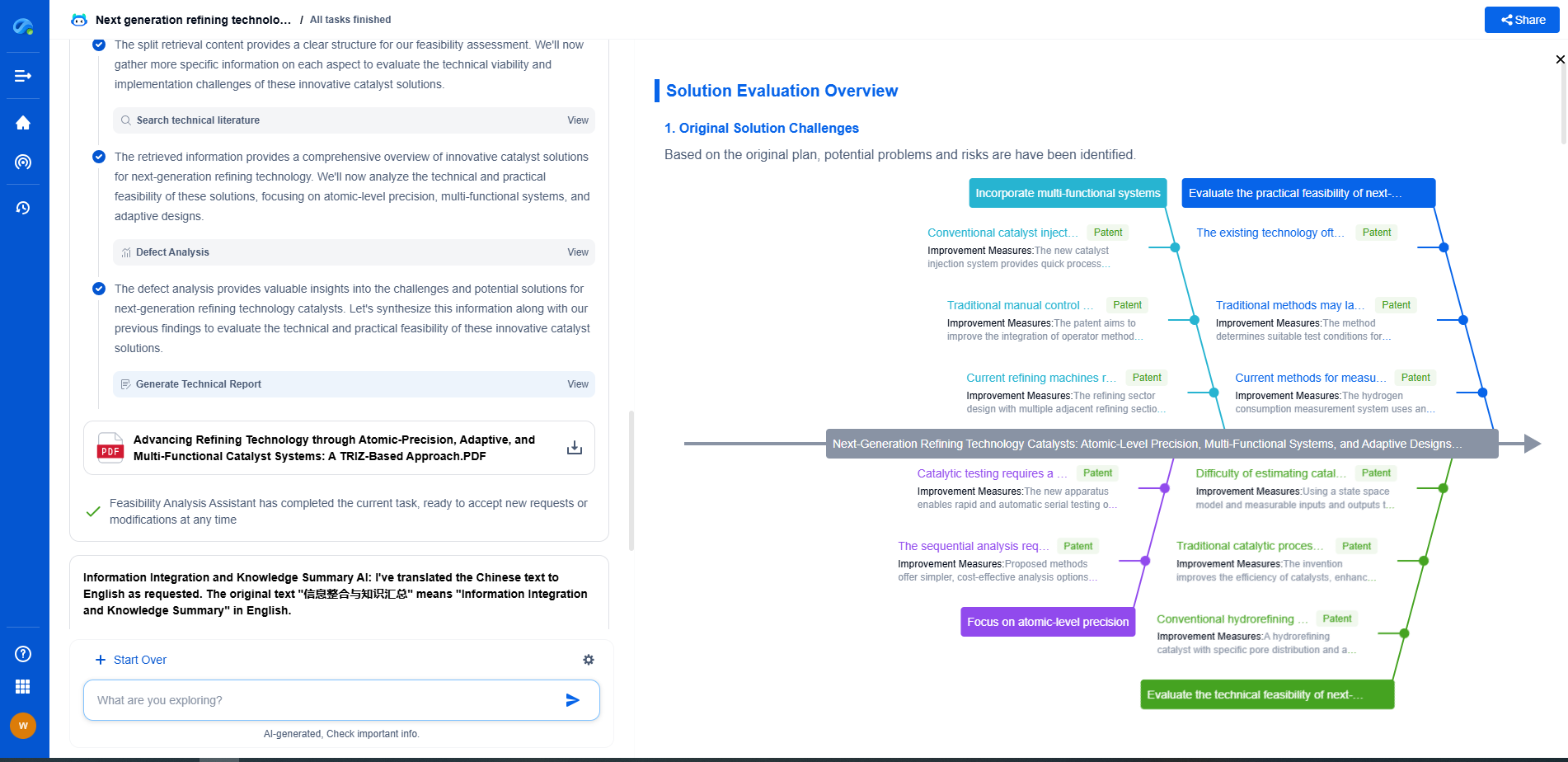Safety Interlock Systems: Preventing Accidental Disconnects During Transfer
JUL 21, 2025 |
Safety interlock systems are crucial in many industrial settings to ensure safe operations, prevent equipment damage, and most importantly, protect human lives. These systems function as a safeguard, preventing accidental disconnects and ensuring that equipment operates only under safe conditions. By integrating interlock systems into the operational framework, industries can significantly reduce the risk of accidents and enhance overall operational efficiency.
How Do Safety Interlock Systems Work?
At their core, safety interlock systems are designed to create a logical sequence of operations. They ensure that certain conditions are met before a machine can start or continue its operation. For example, a machine may not start unless a safety gate is securely closed. This is achieved through physical interlocks, which can be mechanical, electrical, or software-based. Mechanical interlocks might include bolts or switches that physically prevent movement. Electrical interlocks can involve circuit breakers or relay systems, while software-based interlocks use programmed logic to control operations.
The Role of Safety Interlock Systems in Preventing Accidental Disconnects
Accidental disconnects during transfer processes can lead to hazardous situations, including spills, exposure to dangerous materials, or even machinery damage. Safety interlock systems play a pivotal role in preventing such incidents by ensuring that all safety conditions are satisfied before a transfer can proceed. For instance, in chemical processing plants, interlocks ensure that valves are correctly aligned, and containment measures are in place before any material transfer begins. This prevents the accidental release of harmful substances, thereby protecting workers and the environment.
Key Applications of Safety Interlock Systems
Safety interlock systems are employed across various industries, each with unique applications and requirements. In pharmaceuticals, they ensure that equipment cannot be opened during processing, maintaining sterile conditions. In the automotive industry, interlocks prevent the operation of machinery unless safety guards are in position. Similarly, in the energy sector, they are vital in preventing the incorrect flow of fluids or gases, which could lead to catastrophic failures.
Advantages of Implementing Safety Interlock Systems
Implementing safety interlock systems offers numerous advantages. Primarily, they enhance safety by reducing the likelihood of human error, which is often a significant factor in industrial accidents. Moreover, these systems help ensure compliance with industry regulations and standards, thereby avoiding legal liabilities and potential fines. Additionally, by preventing accidental disconnects and ensuring proper operational sequences, interlock systems contribute to reduced downtime and increased productivity.
Challenges and Considerations in Implementing Safety Interlock Systems
While the benefits are clear, implementing safety interlock systems does come with challenges. One of the primary concerns is the potential for system failures or false activations, which can lead to unnecessary downtime and operational disruptions. Therefore, it is crucial to ensure that interlock systems are designed and maintained to the highest standards. Regular testing and maintenance are essential to guarantee reliability. Furthermore, there must be adequate training for personnel to understand and operate these systems effectively.
Future Trends in Safety Interlock Systems
As technology advances, so do safety interlock systems. The integration of Internet of Things (IoT) technology is poised to revolutionize how these systems operate. IoT-enabled interlocks can provide real-time data and analytics, allowing for predictive maintenance and faster response times to potential issues. This not only enhances safety but also contributes to more efficient and cost-effective operations. Additionally, advancements in software algorithms and artificial intelligence can lead to smarter interlock systems that adapt to changing conditions and offer enhanced protection.
Conclusion
Safety interlock systems are a vital component of modern industrial safety protocols. Their ability to prevent accidental disconnects and ensure safe operational sequences cannot be overstated. As industries continue to advance and face new challenges, the role of these systems will only grow in importance. By investing in robust and reliable interlock systems, companies can protect their employees, comply with regulations, and ensure smooth and efficient operations.
As clean energy and decarbonization drive new breakthroughs in hydrogen storage, CO₂ transport, and alternative gas carriers, keeping pace with technical trends and patent activity is critical to staying competitive.
Patsnap Eureka helps innovators in compressed gas storage, high-pressure tank design, gas sensor systems, and pipeline materials accelerate research by offering instant, AI-powered insights into global patents, related technologies, and emerging white spaces.
🚀 Bring speed, precision, and strategic foresight to your innovation and IP decision-making in the gas transport sector—try Eureka today and unlock a smarter path forward.
- R&D
- Intellectual Property
- Life Sciences
- Materials
- Tech Scout
- Unparalleled Data Quality
- Higher Quality Content
- 60% Fewer Hallucinations
Browse by: Latest US Patents, China's latest patents, Technical Efficacy Thesaurus, Application Domain, Technology Topic, Popular Technical Reports.
© 2025 PatSnap. All rights reserved.Legal|Privacy policy|Modern Slavery Act Transparency Statement|Sitemap|About US| Contact US: help@patsnap.com

